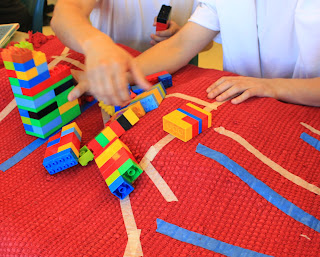 |
| Play Home-Made Hockey |
Teaching American Ingenuity
Adam and Leah wanted to go fishing, but couldn’t do the real thing today. They started looking for poles, bait, line, and fish materials around the house. They gathered yardsticks, yarn, refrigerator clip magnets, and paper clips. With help they attached the yarn, pole and magnets. They spread the paper clips around the floor in a small circle. The person who was “up” was given until the count of 5 to gather some clip fish during a turn. Then the next person took a turn. When the magnets picked up all clips, they counted to find the winner of that round.
The principle they used was, “ Think of a game or sport and simulate it with materials around the house.” Their game was easy, cheap, and entertaining with a little bit of learning mixed in.
How many fishing games can your family create when the weather is foul or the real fish aren’t biting? Paper clips could be placed in a bucket of water. A reluctant preschool child who needs to soak in the tub could have large colorful paper clips in a floating dish and use a ruler, string and magnet to fish. The principle is still the same.
Team Creations
 |
| Make Hockey Sticks: Cardboard & Paint Stirs |
Here are the rules they devised. Place dominoes face down on a table. The first player chooses ten dominoes and stands them up between the two players. The blank side faces the person who has the turn. This player lays a domino about one foot away from the standing dominoes and flicks it to knock down as many dominoes as possible. When all dominoes are knocked down, the dots are totaled and the next person chooses a different set of ten and takes a turn. The grand kids worked as a team to create a new game from materials around the house. A little bit of math was worked into the fun. Mission accomplished.
 | |
| Hit the Tape Spool Puck |
Photo: Fran Darling, fdarling fotos
More Ideas and Activities....See the authors’ book “Learning Through the Seasons” at area bookstores and grandparentsteachtoo.org. For more help to prepare young children for success in school see the authors’ web site: www.grandparentsteachtoo.org. Also check our audio Podcasts WNMU Radio 90; Youtube video activities; and join us on Pinterest





